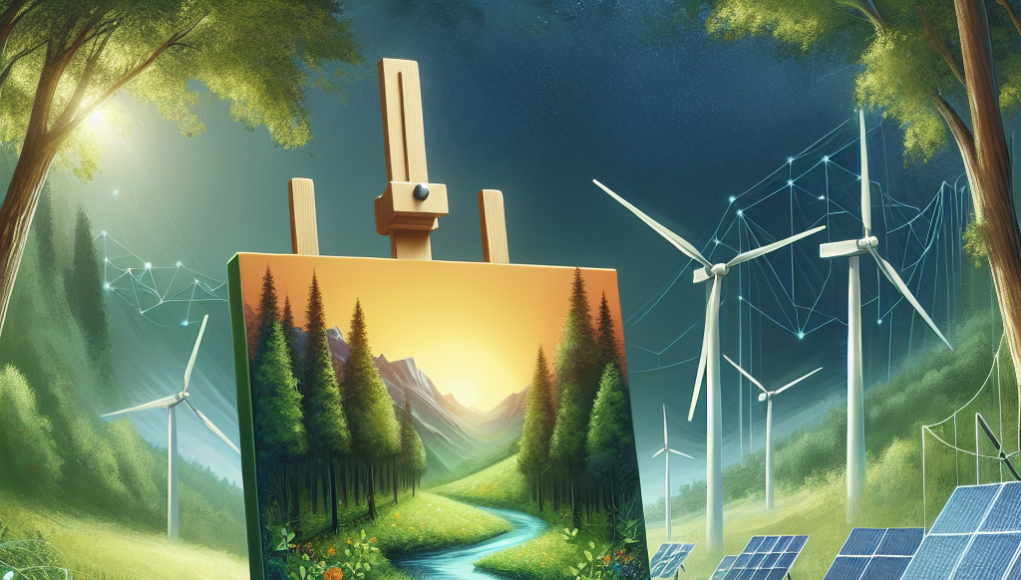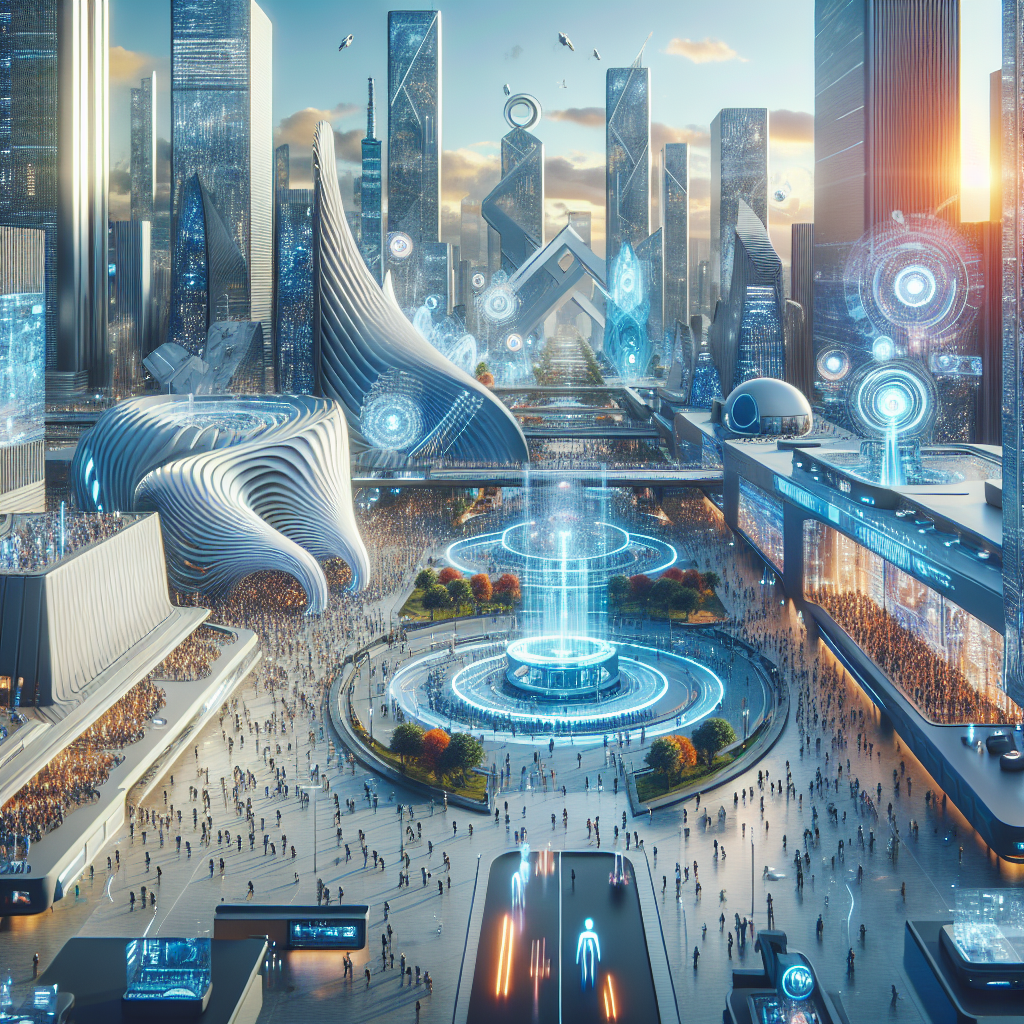In recent years, the intersection of art and sustainability has become a focal point of discussion among artists, technologists, and environmentalists alike. With the rise of digital art, questions about its ecological impact have surfaced, prompting a deeper exploration into sustainable practices within this creative domain. This article delves into the relationship between digital art and ecology, examines the environmental footprint of digital tools, and highlights innovations that are driving greener art practices.
Understanding the Intersection of Art and Ecology
Digital art, a medium that flourished alongside technological advancements, has significantly reshaped the traditional art landscape. Unlike its physical counterparts, digital art exists in a virtual space, offering a seemingly limitless canvas for creativity. However, this shift from tangible to digital has sparked debates about its ecological implications. As artists increasingly rely on digital platforms, understanding how these tools impact the environment becomes crucial.
The relationship between art and ecology isn’t new. Historically, artists have drawn inspiration from nature, often using their work to comment on environmental issues. Today, digital artists are continuing this tradition by creating works that not only reflect ecological themes but also consider their medium’s environmental impact. This dual focus is encouraging artists to adopt sustainable practices, ensuring that their contributions to the art world don’t come at the expense of the planet.
Digital art’s virtual nature might suggest a reduced environmental impact compared to traditional art forms, which often require physical materials. However, the reality is more complex. The energy consumption of digital devices, data storage, and online platforms can contribute to significant carbon emissions. As the digital art community grows, so does its potential ecological footprint, necessitating a closer examination of how digital creativity intersects with sustainability.
The concept of eco-art has emerged as a critical component of this dialogue. Eco-artists aim to create art that not only addresses environmental issues but also minimizes harm to the planet. In the digital realm, this involves exploring methods to reduce energy consumption and carbon emissions associated with art creation and distribution. By integrating ecological considerations into their work, digital artists are redefining what it means to produce sustainable art.
Education and awareness are pivotal in bridging the gap between digital art and ecology. Many artists are now engaging in discussions and workshops focused on sustainable practices, sharing knowledge on how to minimize the environmental impact of their digital creations. This growing awareness is fostering a community that values both artistic innovation and ecological responsibility.
In summary, the intersection of art and ecology in the digital age is a multifaceted issue that requires a nuanced approach. While digital art offers new possibilities for expression, it also presents challenges that must be addressed to ensure its sustainability. By embracing eco-friendly practices, digital artists can contribute to a more sustainable future while continuing to push the boundaries of creativity.
Digital Tools and Their Environmental Footprint
The creation of digital art relies heavily on various technological tools, from powerful computers and tablets to advanced software and online platforms. While these tools have revolutionized the art world, they also come with an environmental cost. Understanding the ecological footprint of these digital tools is essential for artists seeking to make environmentally conscious choices in their creative processes.
One of the primary concerns is the energy consumption associated with digital art creation. High-performance computers and graphics tablets require significant amounts of electricity, contributing to carbon emissions. Additionally, the production and disposal of electronic devices pose environmental challenges, as they often involve resource-intensive manufacturing processes and generate electronic waste.
Data storage is another significant factor in the environmental footprint of digital art. As artists create and store high-resolution digital files, the demand for data storage increases. This, in turn, requires substantial energy to maintain servers and data centers, which are often powered by non-renewable energy sources. The growing need for cloud storage and online platforms further exacerbates this issue, highlighting the importance of sustainable data management practices.
Software development also plays a role in the environmental impact of digital art. The continuous updates and iterations of digital art software demand computational resources, contributing to energy consumption. Furthermore, the development and maintenance of online platforms for digital art sharing and sales involve significant server usage, which can result in a considerable carbon footprint.
To address these challenges, artists and technologists are exploring ways to reduce the environmental impact of digital tools. This includes optimizing software for energy efficiency, promoting the use of renewable energy sources in data centers, and encouraging the recycling and responsible disposal of electronic devices. By adopting these measures, the digital art community can work towards minimizing its ecological footprint.
Ultimately, the environmental impact of digital tools is a complex issue that requires collaboration between artists, technologists, and policymakers. By raising awareness and advocating for sustainable practices, the digital art community can contribute to a more environmentally responsible future, ensuring that creativity does not come at the expense of the planet.
Innovations Paving the Way for Green Art Practices
In response to the environmental challenges posed by digital art, a wave of innovations is emerging, aimed at promoting sustainability within the art world. These innovations are transforming how artists create, share, and sell their work, paving the way for more eco-friendly practices that align with the principles of sustainability.
One promising innovation is the development of energy-efficient software and hardware. By optimizing digital tools to consume less power, artists can reduce their energy usage without compromising on performance. Companies are increasingly focusing on designing devices and software that prioritize energy efficiency, providing artists with the tools they need to create sustainably.
Blockchain technology, often associated with cryptocurrencies, is finding new applications in the art world, offering potential solutions for reducing the carbon footprint of digital art transactions. By developing more energy-efficient blockchain platforms, artists can engage in secure, transparent transactions that minimize environmental impact. This is particularly relevant for the growing market of digital art and NFTs (non-fungible tokens), which have faced criticism for their energy-intensive processes.
Virtual and augmented reality technologies are also contributing to greener art practices. These technologies enable artists to create immersive experiences without the need for physical materials, reducing waste and resource consumption. Additionally, virtual exhibitions and galleries offer an environmentally friendly alternative to traditional art shows, eliminating the need for travel and physical space.
Collaboration between artists and technologists is fostering innovation in sustainable art practices. By working together, these communities are developing new tools and methods for creating digital art in an eco-conscious manner. This collaborative approach is driving the creation of platforms and networks that support sustainable art practices, encouraging artists to adopt green technologies and share best practices.
Education and advocacy play a crucial role in promoting sustainable innovations in digital art. By raising awareness of the environmental impact of digital tools and highlighting sustainable alternatives, artists can inspire change within the community. Workshops, conferences, and online resources provide valuable opportunities for artists to learn about and adopt eco-friendly practices.
As the digital art landscape continues to evolve, these innovations offer a pathway towards a more sustainable future. By embracing energy-efficient technologies, exploring new mediums, and fostering collaboration, the digital art community can lead the way in promoting environmentally responsible creativity. This commitment to sustainability not only benefits the planet but also enriches the artistic process, opening up new possibilities for expression and innovation.
The journey towards sustainable digital art practices is both challenging and rewarding. By understanding the intersection of art and ecology, examining the environmental footprint of digital tools, and embracing innovative solutions, artists can contribute to a more sustainable future. As the digital art community continues to grow and evolve, its commitment to sustainability will play a crucial role in shaping the future of creativity, ensuring that art remains a powerful force for positive change in the world.










